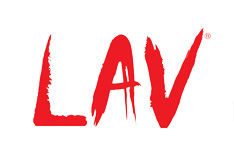Music and Creativity
Music education develops creativity by fostering originality, flexibility and imagination, and optimizes versatility in problem-solving abilities through the power of discovery. (1)
Increased creative potential equips young learners with the ability to generate new and novel ideas, choose which concepts to pursue as a result of critical thinking, and convert abstract thought into action. (2,3)
Employers identify creativity as one of the top five skills important for success in the 21st century workforce. Graduates from music programs report that creativity is a crucial competency in their work, regardless of whether they are working in music-related fields. (4-10)
References
- Sternberg, R.J. & Williams, V.M. (1996). How to develop student creativity.
- Alexandra, VA: ASCD
- K.L. Wolff, The Effects of General Music Education on the Academic Achievement, Perceptual Motor Development, Creative Thinking, and School Attendance of First Grade Children, 1992
- Craft, A. (2001). An Analysis of Research and Literature on Creativity and Education. Report Prepared for the Qualifications and Curriculum Authority, Coventry, England.
- Stategic National Arts Alumni Project (SNAAP), (2010). Forks in the Road: The Many Paths of Arts Alumni: Strategic National Arts Alumni Project 2010 Findings, Bloomington, IN.
- Lichtenberg, J., Woock, C. & Wright, M. (2008). Ready to innovate: Are educators and executives aligned on the creative readiness of the U.S. workforce? New York: NY: The Conference Board
- Luftig, R. (2000). An investigation of an arts infusion program on creative thinking, academic achievement, affective functioning, and arts appreciation of children at three grade levels, Studies in Art Education, 41, 208-227.
- Moga, E., Burger, K., Hetland, L. & Winner, E. (2000). Does studying the arts engender creative thinking? Evidence of near but not far transfer. Journal of Aesthetic Education, 34, 91-104
- Dunbar, K. (2008). Arts education: the brain and language. In C. Ashbury & C. Rich (Eds.) Learning, Arts and the Brain (pp. 81-92). New York: Dana Foundation.
- IBM Corporation. (2010). Capitalizing on complexity: Insights from the 2010 IBM global CEO study. Armonk, NY: Author.
- Quintin, O. (2009). Creativity in schools in Europe: A survey of teachers. Brussels: European Commission Joint Research Center, The Institute for Prospective Technological Studies.
 Donate
Donate